Madrid
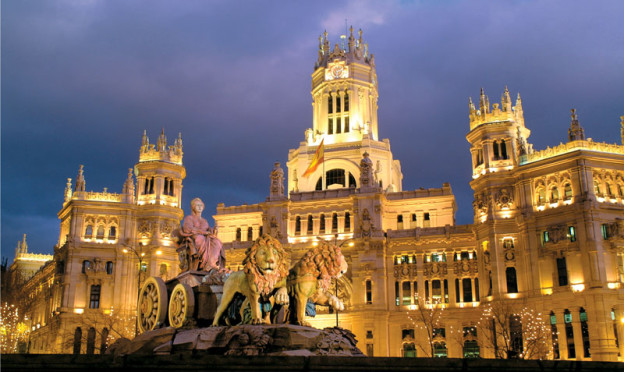
Madrid in Spain. The capital Madrid in Spain is a wonderful city for all who want to experience a real beautiful big city. Whether you’re traveling with children, have planned a cultural weekend, one weekend of romance or just want to have a good time with friends, then Madrid is the city.
Four hours into the country, no matter where in Spain on the mainland you may come from,you will find the country’s capital Madrid. The town is located at 667 meters above sea level and covers an area of 604.3 km². Madrid is the capital and largest city in Spain and the autonomous community of Madrid. The metropolis has 3.3 million inhabitants and in the metropolitan area live about 6.5 million people. Madrid is the third largest city in the EU. The city is well-regulated and beautiful, and is packed with museums, galleries, parks, restaurants, and a bustling nightlife.
Video about Madrid
Walking around in Madrid
A walking tour in Madrid in Spain sounds like a nightmare for parents. However, there are little tricks that can transform the day into an experience. Park you car outside the city and take the metro into the city. A 24 hour ticket costs 2.40 euros and then you can travel all you want. The car can be left free in a small town on the outskirts of Madrid. Take the metro to the Plaza de España, this is the station that is most central to visitors. Walking down through the place and go to the left corner of the opposite side of the park. There you will see the castle and just behind on the left for this, the old town starts. It’s many amazing buildings to look at, cozy sidewalk restaurants and a quiet street life.
Old Town in Madrid
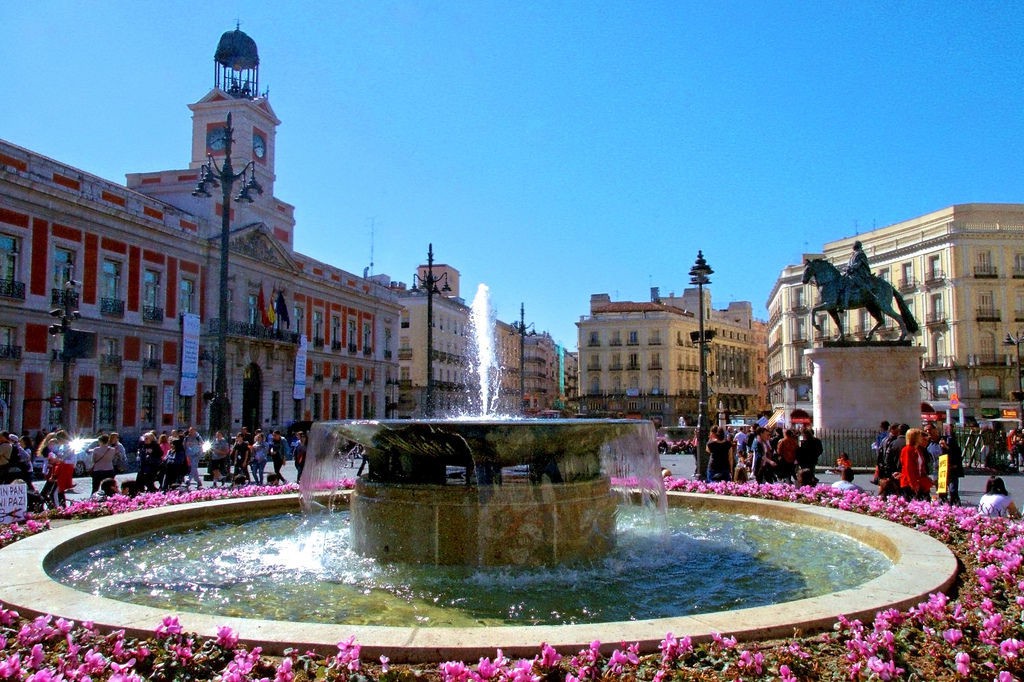
In the Old Town of Madrid you will find the wonderful Plaza Major with restaurants, great buildings and several cultural events of the year. Shopping is important for the traveler and it is quite clear that the city has the something for most people. The big and different shopping center is found among others in the town Getafe south along the A4 motorway. Factory is a center of several thousand square meters where the vast majority of textile brands have their own outlets, many with factory prices. You can get bargains in all price ranges!
Traveltips Madrid
Everything you need to know about attractions, restaurants, nightlife, hotels, climate, and the different districts in Madrid. What you need to know when you visit Madrid in Spain.
Attractions and things to do in Madrid
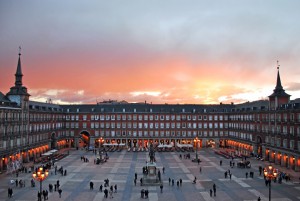 Sights and attractions in Madrid Full of energy and packed with cultural sights and attractions, Madrid is a modern city that offers a taste of the real Spain. Broad avenues, museums, monuments and beautiful parks breaks up urban sprawl, and some of it can be experienced in the capital. Read more about attractions and activities in Madrid
Sights and attractions in Madrid Full of energy and packed with cultural sights and attractions, Madrid is a modern city that offers a taste of the real Spain. Broad avenues, museums, monuments and beautiful parks breaks up urban sprawl, and some of it can be experienced in the capital. Read more about attractions and activities in Madrid
Theme parks and zoos in Madrid
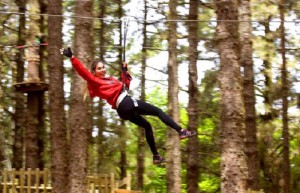 Madrid has many child-friendly attractions and activities that suits the whole family. Here you will find everything you can imagine, when you are going to do something fun with the kids. Check out our list of amusement parks and zoos in Madrid that are guaranteed to get your children to grin from ear to ear. Read more about theme parks in Madrid
Madrid has many child-friendly attractions and activities that suits the whole family. Here you will find everything you can imagine, when you are going to do something fun with the kids. Check out our list of amusement parks and zoos in Madrid that are guaranteed to get your children to grin from ear to ear. Read more about theme parks in Madrid
Nightlife in Madrid
 Madrids legendary nightlife is tremendous and among the best in Europe. Throughout history bars and pubs in Madrid has had an important role in the society. Here writers, dissidents and journalists meet to discuss whatever they had to say, and the nightlife in Madrid is still an important part of life, perhaps more vibrant than ever. Madrid’s nightlife never stops. From Monday to Sunday you can go out until the early morning hours and end up eating churros with chocolate for breakfast at any cafe, along with taxi drivers who start their morning shift. Read more about nightlife in Madrid
Madrids legendary nightlife is tremendous and among the best in Europe. Throughout history bars and pubs in Madrid has had an important role in the society. Here writers, dissidents and journalists meet to discuss whatever they had to say, and the nightlife in Madrid is still an important part of life, perhaps more vibrant than ever. Madrid’s nightlife never stops. From Monday to Sunday you can go out until the early morning hours and end up eating churros with chocolate for breakfast at any cafe, along with taxi drivers who start their morning shift. Read more about nightlife in Madrid
Hotels in Madrid
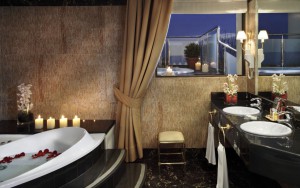 Going to Madrid and looking for good hotels for a romantic weekend or just a great time with your family? We give you 17 perfect hotels where you get a good night’s sleep, great service and centrally located for all activities, restaurants and shopping that Madrid can offer. The hotels vary from simple cheap hotel with three stars, to luxury hotels with a far higher rate with 5 stars. Some of the hotels also have fantastic spa facilities perfect for a weekend with your better half. Read more about hotels in Madrid
Going to Madrid and looking for good hotels for a romantic weekend or just a great time with your family? We give you 17 perfect hotels where you get a good night’s sleep, great service and centrally located for all activities, restaurants and shopping that Madrid can offer. The hotels vary from simple cheap hotel with three stars, to luxury hotels with a far higher rate with 5 stars. Some of the hotels also have fantastic spa facilities perfect for a weekend with your better half. Read more about hotels in Madrid
Car hire in Madrid
Spains capital Madrid is a beautiful large city with much to see and experience. There are large distances between the districts and several of the main attractions and sights situated on the outskirts of town. Rent a car in Madrid and travel around at your own pace, and have room for the family and luggage. In most cases it is the cheapest and most convenient to get your car rental at the airport in Madrid. Then you don`t need alternative transportation and can return the car at the airport. Check rates and read more about car hire in Madrid
Restaurants in Madrid
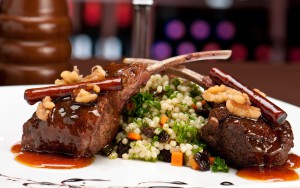 Are you visiting Madrid on a holiday or a business trip? Maybe you have just moved here and do not know where to go for a good restaurant experience? In Madrid there are many restaurants of superb quality. The decline in the Spanish economy makes it possible to eat Michelin-quality food at the restaurants at reasonable prices. In Madrid there is everything you can think of restaurants from all continents. Read more about restaurants in Madrid
Are you visiting Madrid on a holiday or a business trip? Maybe you have just moved here and do not know where to go for a good restaurant experience? In Madrid there are many restaurants of superb quality. The decline in the Spanish economy makes it possible to eat Michelin-quality food at the restaurants at reasonable prices. In Madrid there is everything you can think of restaurants from all continents. Read more about restaurants in Madrid
Climate in Madrid
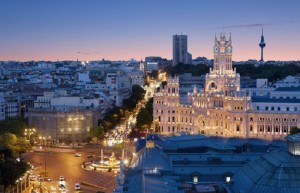 Madrid is located in Spain at 667 meters above sea level and covers an area of 604.3 km². The city is the capital of Europe with the second highest location in Andorra la Vella. During the year, Madrid has a predominantly dry weather. Summer and winter temperatures are quite different. The weather between the months of May and July are warm with an average temperature of between 20 and 32 ° C. In late July and August, temperatures can reach up to 40 ° C. However, the temperature is tolerable because the humidity is low. During the winter months, November and December, the temperature drops down to 9 ° C. Her we discuss everything you need to know about weather, climate, temperature, precipitation, sunshine hours and much else in the big city Madrid. Read more about climate in Madrid
Madrid is located in Spain at 667 meters above sea level and covers an area of 604.3 km². The city is the capital of Europe with the second highest location in Andorra la Vella. During the year, Madrid has a predominantly dry weather. Summer and winter temperatures are quite different. The weather between the months of May and July are warm with an average temperature of between 20 and 32 ° C. In late July and August, temperatures can reach up to 40 ° C. However, the temperature is tolerable because the humidity is low. During the winter months, November and December, the temperature drops down to 9 ° C. Her we discuss everything you need to know about weather, climate, temperature, precipitation, sunshine hours and much else in the big city Madrid. Read more about climate in Madrid
Districts in Madrid
There is much to see and experience in Madrid, Spain. Here we discuss the different districts of Madrid and what you can see and experience there.
Austrias
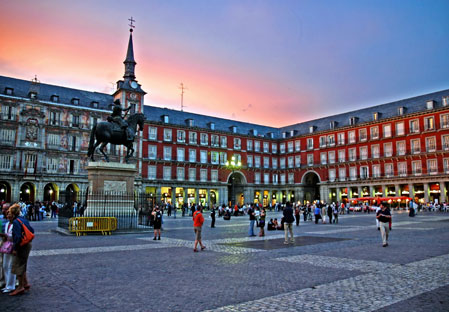
In the oldest part of Madrid you will find the majestic castle with the popular atmosphere of Plaza Mayor and its surroundings. Plaza Mayor, La Encarnación Monastery and Plaza de la Villa, with buildings constructed in the fifteenth, sixteenth and seventeenth centuries – Casa de la Villa (formerly, Madrid City Hall), Los Lujan Tower, Cisneros House – is the most important architectural complexes buildings built under the Hapsburgs. A landmark that should be experienced is Descalzas Reales, a convent that was the royal seat of Charles I of Spain. Here you can see the collection of works of art from the sixteenth century. Finally, Santa Cruz Palace, built in 1629 and is home to the Foreign Ministry.
This part of Madrid, is peppered with churches and crown of the work is the Alcázar. Nearby is the Plaza de Oriente, La Almudena Cathedral, which has a museum that gives access to the dome, providing a beautiful view of the Sierras and other buildings from the seventeenth to the nineteenth century. Some of these sights is the Collegiate Church of San Isidro (Madrid Cathedral until 1993), the Basilica of San Miguel, the Basilica of San Francisco el Grande and Teatro Real opera house.
Barrio de Las Letras
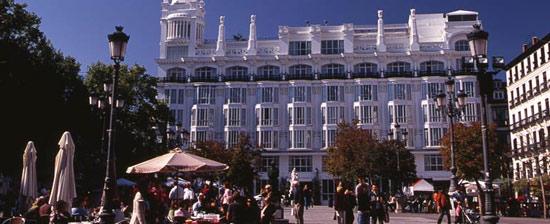
Explore the district where many giants of the golden age of Spanish literature is housed. Barrio de las Letras (Literary Quarter) is located in the heart of Madrid, between attractions like Sol-Gran Vía and Paseo del Arte (Art Walk). The district borders to Calle de la Cruz, San Jerónimo, Paseo del Prado and Calle Atocha. In the seventeenth century the authors Cervantes, Lope de Vega, Quevedo, Tirso de Molina and Góngora had their homes here. Some of the streets in this neighborhood is a tribute to chapters in Spanish history.
Barrio de Salamanca
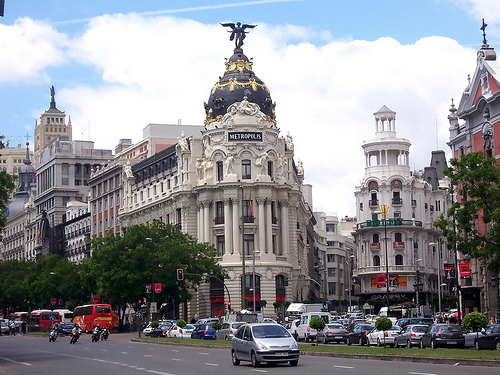
Discover the luxury shops of the Golden Mile, Michelin star restaurants and the most elegant night life in Madrid. The neighborhood was developed in the second half of the nineteenth century as an extension planned under Queen Isabella I. The designer was Malaga-born José de Salamanca y Mayol, Marquis of Salamanca. He wanted to have an area for the exclusive residence of the Madrid aristocracy and bourgeoisie. The carefully designed buildings here have beautiful facades that will catch your eye. Historically Salamanca been a residential area inhabited mostly by Spain’s economic and political elite. In the last fifty years it has attracted diplomats, businessmen and, along with them, sophisticated fashion boutiques.
Casa de Campo
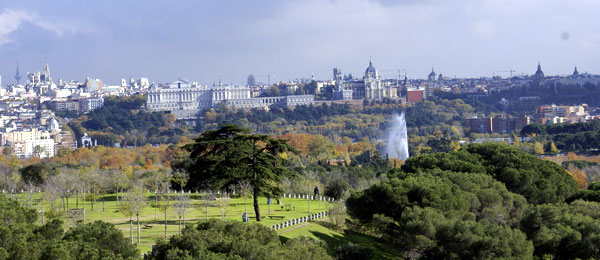
The largest park in Spain, Casa de Campo is a short walk from central Madrid. With over 1722 hectares, Casa de Campo is the largest park in Spain. The most common trees are holm oak and pine, in the style of most beds in Castilian plateau. The importance of Casa de Campo step when King Philip II of Spain moved the court to Madrid in 1561, and the royal residence was established in the old castle, which stood on the site of today’s Royal Palace.
Castellana
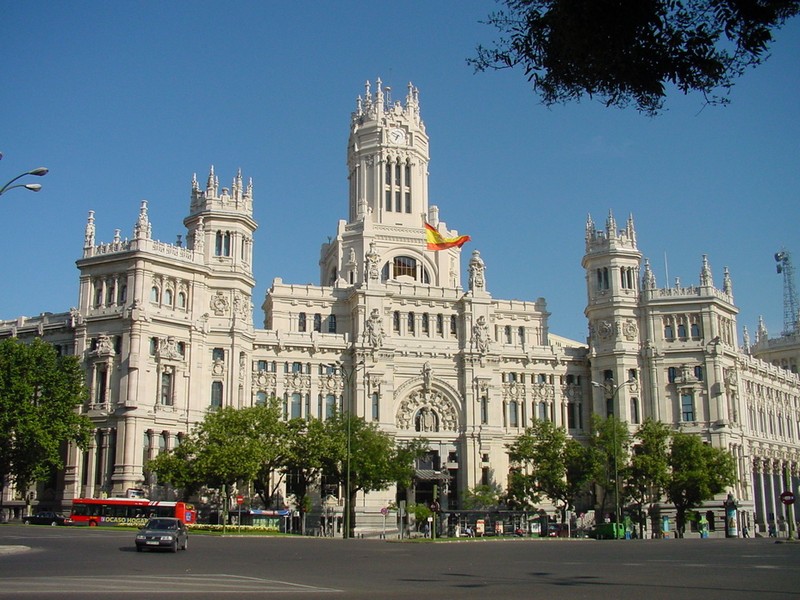
Castellana is Madrid’s financial district and home to embassies, ministries and international cultural centers. Museum of Public Art, formerly “Open-Air Sculpture Museum”, can be found here and contains art by Joan Miró, Pablo Serrano and Eduardo Chillida. At the Plaza de San Juan de la Cruz is the National Museum of Natural History – a must for travelers with children – and High Technical School of Industrial Engineering.
Nuevos Ministerios building is the seat of the Ministry of Development and the Ministry of labor and social security. Beside it there starts AZCA, the financial center of Madrid, dominated by Picasso, Europe and BBVA towers. Opposite the Palacio de Congresos y Exposiciones displayed a mural of abstract artist Joan Miró. La Castellana ends at the Cuatro Torres Business Area, a business park developed on the site of the old Real Madrid Sports City. The complex has four tall skyscrapers: Torre Bankia which is 250m high, it is the tallest tower in Madrid and across Spain – Torre PwC, Torre de Cristal (Glass Tower) and Torre Espacio (Space Tower).
Chamberí
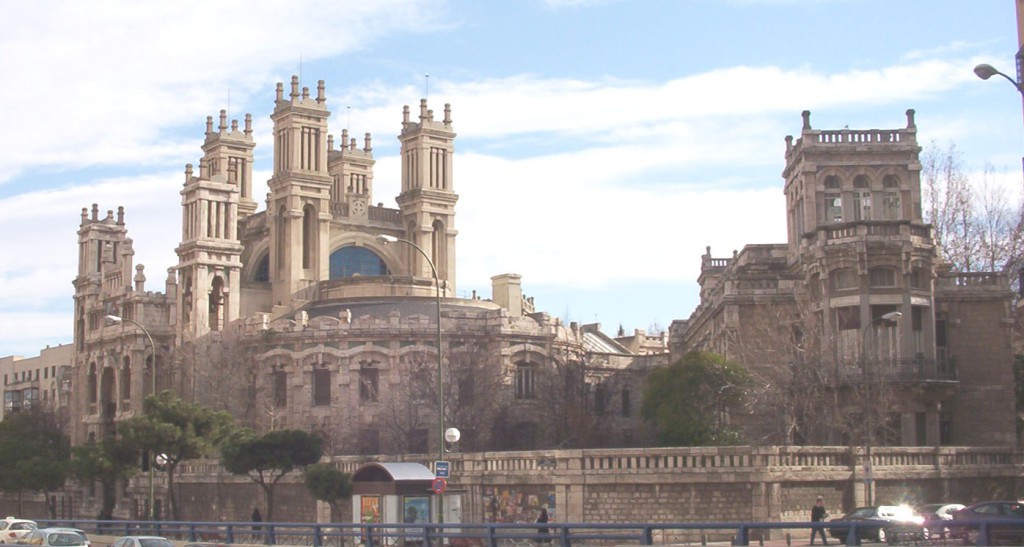
Chamberí is a traditional district with an aristocratic architectural style in the heart of Madrid. The district consists of several neighborhoods – Trafalgar, Arapiles, Gaztambide, Vallehermoso, Ríos Rosas and Almagro -, Chamberí district was home to many aristocrats in the past two centuries.
In Chamberí you will find Sorolla Museum and the Geomineral Museum. The former home of the painter from Valencia used to live in Madrid. Equally interesting as his paintings is the collection of sculptures, furniture and ceramics, and there is a beautiful garden there also. A short walk from these museums you come over to Andén Cero-Estación de Chamberí, an old subway station that was closed in 1969 and converted into a visitor center in Madrid’s underground system. Here you will travel back in time to 1919, the year the first underground line, across the city center from Cuatro Caminos to Gran Vía.
Plaza de Olavide, in Trafalgar, is a nice landscaped square surrounded by terraces. It’s a good place to meet friends and eat tapas. Halfway from Arapiles Vallehermoso, on Calle de Cea Bermúdez is Teatros del Canal. Designed by Juan Navarro Baldeweg and covers 35,200m2. This modern theater complex contains the latest technology, and was awarded the coveted National Architecture Award in 2008. Teatro del Canal offers classical and modern plays, concerts, dance and flamenco performances, zarzuela, opera and circus shows.
The largest green area in Chamberí are Santander Park, making golfing facilities available in the heart of Madrid. At 120,000m2 combines park vegetation with modern sports infrastructure (artificial football pitches, paddle tennis courts, and a 1200 m trail for jogging and running.
Chueca
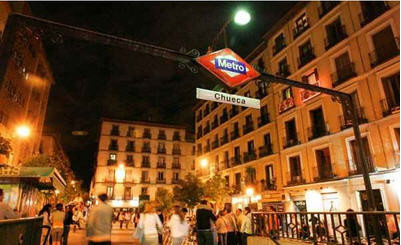
Shops, culture, good food, the latest trends and fun in a neighborhood that never goes out of fashion. In the deep heart of Madrid, next to Gran Vía, is Chueca globally known, thanks to their high mood and lively nightlife. Art and history contribute to it being a tourist attraction as well. Chueca accommodates Museum of Romanticism, which is located in the former palace of the Marquis of Matallana, built in 1776. The museum contains an interesting collection of paintings, furniture and ornaments from the nineteenth century which gives you an idea of how Romantic Madrid was at that time.
Here you will find art from renowned artists such as Goya, Esquivel, Madrazo, Alenza, Gustavo Adolfo Bécquer and his brother Valeriano, among other artists. Porcelain dolls, 15 pianos, furniture Fernandino and Isabelino styles (named after King Ferdinand VII and Queen Isabella II of Spain), and the gun that was used by writer and journalist Mariano José de Larra to kill himself.
A few steps away is the Longoria Palace, one of the few fully Modernist buildings found in the region. Today, crowned by an impressive glass dome with a cast iron frame, it is home to the Spanish Society of Authors (SGAE). Between Chueca and Malasaña, is the former Municipal Museum, now converted into History Museum.
Conde Duque
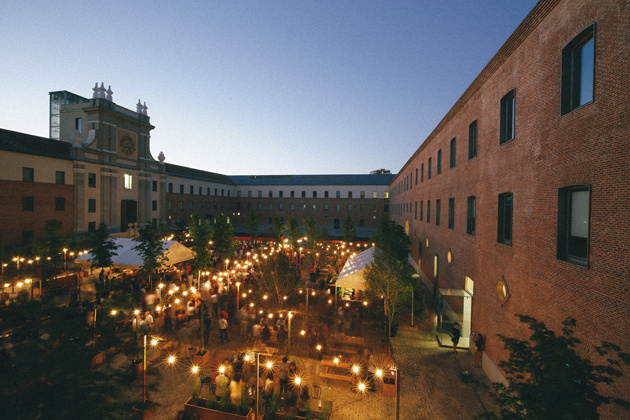
Around the old Conde Duque military quarters, is a district of narrow streets, traditional taverns and original shops. Conde Duque is developed around the old military quarters bearing the same name. Unlike their more boisterous southern borders, Gran Vía, Plaza de España and Calle Princesa, the Conde Duque a quiet and peaceful neighborhood.
Currently, Conde Duque quarters is a large cultural center that Matadero or CentroCentro. After building rehabilitation was completed in 2011, it now houses Municipal Archives, the municipal newspaper, Periodical Library and the city’s Historical Library.
Sol-Gran Vía
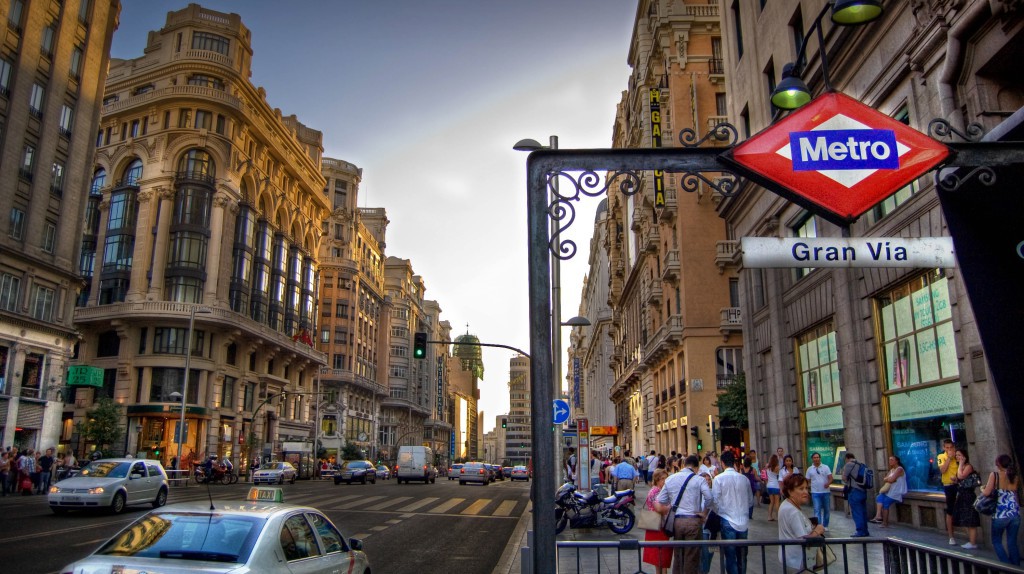
The area between Puerta del Sol and Gran Vía, with adjacent streets, is undoubtedly the center of the tourist zone of Madrid, cultural and recreational life. It is here that visitors begin or end their tour of the city. It is here that you can listen to the heartbeat of the Spanish capital.
Puerta del Sol makes the city’s eastern borders in the fifteenth century. Later, when Madrid was expanded eastward, the area became the city center. This large space is one of the most popular meeting places in town. At midnight on December 31 each year attracts square large crowds coming to welcome the New Year, where a grape is eaten for each clock stroke at midnight.
Gran Vía much younger. However, during a century, this area became the symbol of Madrid. Cinema theaters, cinemas, fashion stores, as well as some symbolic buildings and the first skyscrapers were built here. Verdi, Telefónica and Carrión buildings, Madrid Tower – stands along the Gran Vía.
La Latina
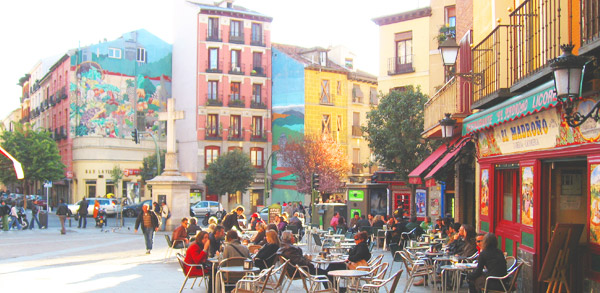
With a location right in the heart of Madrid you will find the district of La Latina adjacent to other attractive areas, Madrid de los Austrias (Habsburg Madrid), Sol-Gran Vía, Lavapies and Madrid Río Park.
The neighborhood was named after the author and humanist Beatriz Galindo, one of the most relevant personalities in the fifteenth century, which was often referred to as ‘La Latina’ because she was remarkably proficient in Latin. Actually, she was supervisor of Queen Isabella and her children. Together with her husband, she established a hospital at Calle Toledo, next to Plaza de la Cebada, known as ‘Hospital de La Latina’.+
Lavapies
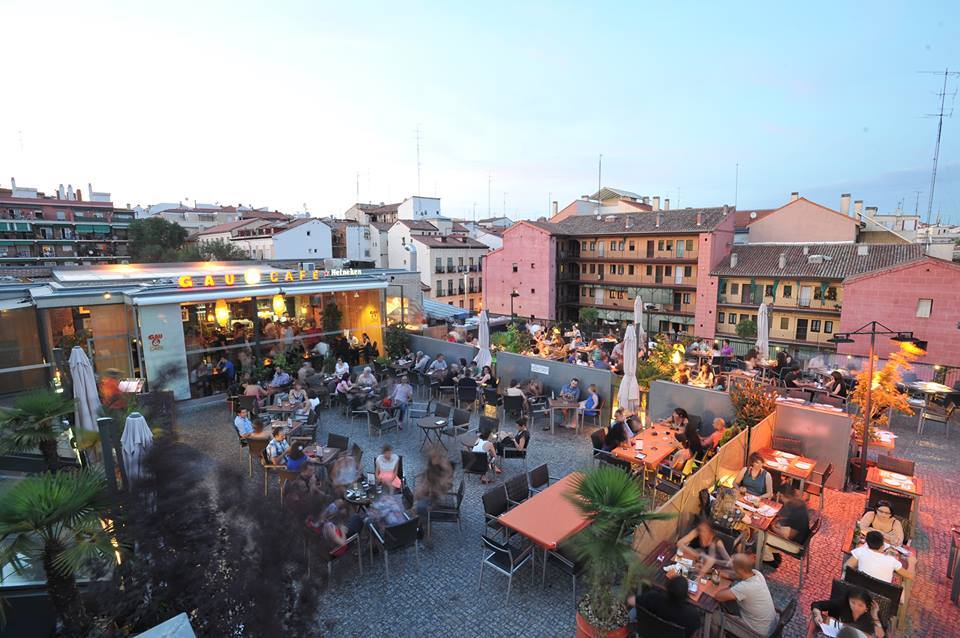
Tourist district Lavapies located in the southeastern part of central Madrid. As in the neighboring district of Barrio de La Latina, the streets here steep, narrow and maze-like, which reminds us that the area appeared in the Middle Ages.
Since the sixteenth century, Lavapies been inhabited by the lower classes. Local residents used to live in apartment buildings, or apartment buildings, called Corral which was arranged around an inner courtyard. You can see a typical example of this type of buildings at the corner of Tribulete and Meson de Paredes. Madrid’s popular legacy lives in perfect harmony with the customs and traditions that accompanied immigrants who came from different countries and who settled in the area. Lavapies is a meeting place for a wide range of cultures.
Madrid Río
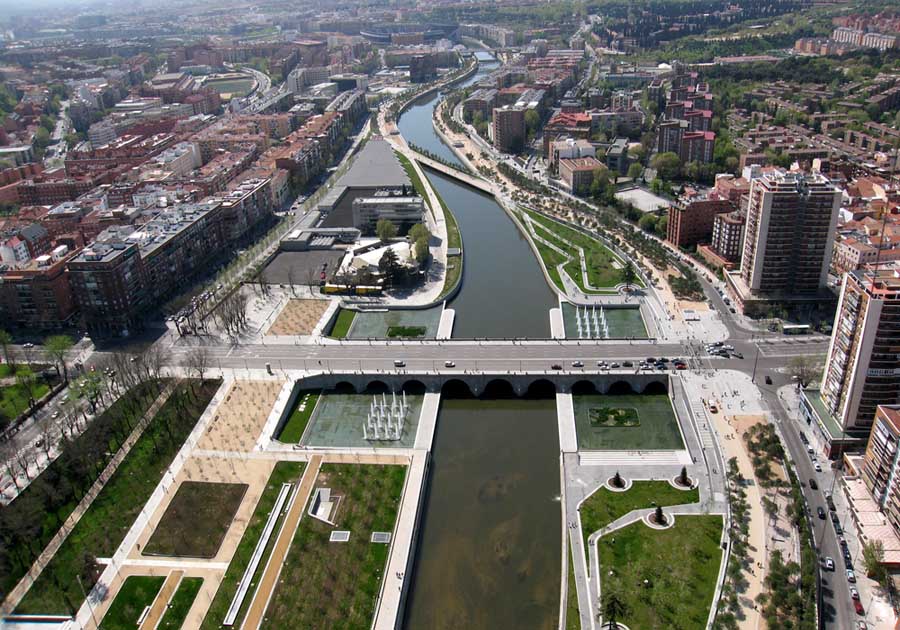
Madrid Río is one of Madrid’s main ecosystem rebalancing projects. Part of the busy M-30 ring road which runs parallel to the river Manzanares was buried under the earth, which resulted in a massive 10km long park that locals can enjoy.
Inaugurated in April 2011, covers Madrid Río almost 700ha of restored land. The width of the river and surrounding area is filled with a wide range of leisure facilities and attractions that revolve around four themes – new architectural highlights, sports and culture.
Malasaña – TRIBALLE
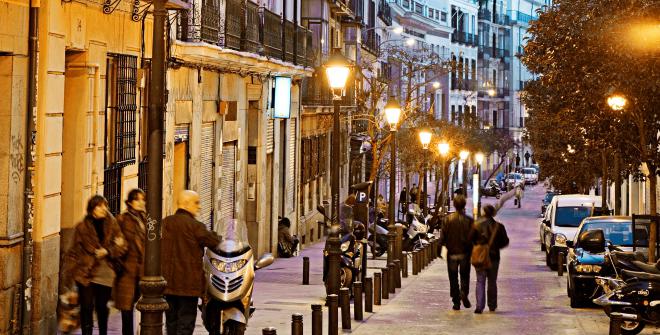
The district Malasaña resembles a square, adjacent to the Gran Vía to the south, Fuencarral to the east, Calle Carranza in the north and Calle de San Bernardo to the west. The district takes its name from Manuela Malasaña, one of the heroines and victims of the historical events that took place in Madrid on May 2, 1808. Plaza del Dos de Mayo, in the heart of the neighborhood, celebrates rebellion against Napoleon’s occupation led by captains Luis Daoiz and Pedro Velarde, officers at the headquarters of Monte Leon Artillery Regiment.
In 1980 Malasaña witnessed the birth of Movida Madrileña, an underground movement that revolutionized art, culture and the Spanish society. The district includes TRIBALLE, a shortened version of “Ballesta Triangle”, an area named after the Calle de la Ballesta. Triball seems to have been reborn in the past, with the opening of a dedicated space and culture, fashion and gastronomy.
Paseo del Arte
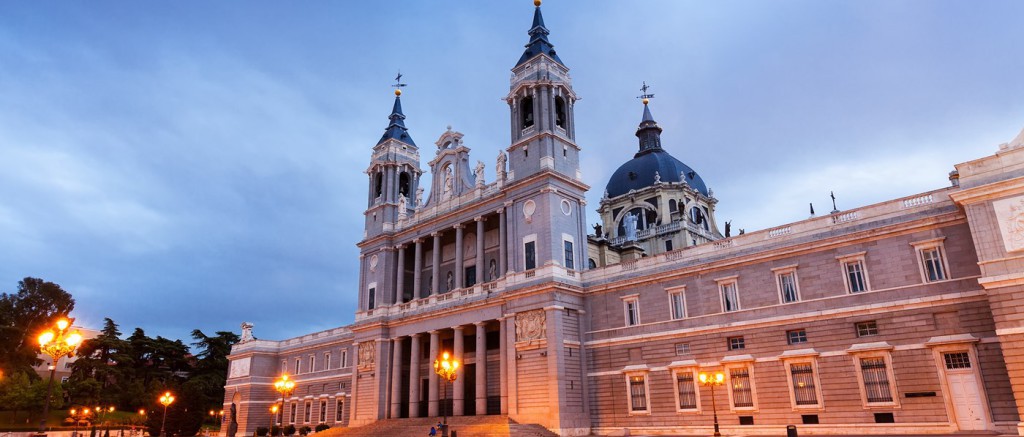
Paseo del Arte is known as the Golden Triangle of Art. Along a two km long stretch, are three of the world’s best art collections.
Prado Museum
Founded by Queen Maria Isabel House of Braganza in 1819, the museum is housed in a neoclassical building designed in 1785 by architect Juan de Villanueva to accommodate the natural history department. Prado museum showcases the stunning royal collection of art, which consists of works from the Spanish, Francja and Italian schools. Some of the greatest masterpieces you can look at the Prado is Las Meninas by Velázquez, Light The Garden of Hieronymus Bosch or Goya’s Black Paintings.
Museo Thyssen-Bornemisza
Thyssen-Bornemisza Villahermosa Palace, across the street from the Prado Museum. Here’s the collection of Thyssen-Bornemisza founded by Heinrich Thyssen in 1920, and expanded by his son Hans Heinrich. Opening in October 1992, shows paintings from the Middle Ages to the end of the twentieth century with art works by Canaletto, Gauguin, Kandinsky and Hopper, among many others. It exhibits also a part of the Carmen Thyssen-Bornemisza Collection, which contains an interesting selection of Impressionist art.
Reina Sofía (MNCARS)
Reina Sofia Museum was first opened to the public in 1990 as a continuation of the Prado Museum, and displays artwork from the late nineteenth century to the present. The museum is located in the former Community General Hospital which was built by Francisco Sabatini and later expanded by the architect Jean Nouvel. You can find artworks from masters such as Dalí, Miró and Juan Gris. But the highlight of the collection is, without doubt, Picasso’s Guernica.
Princesa
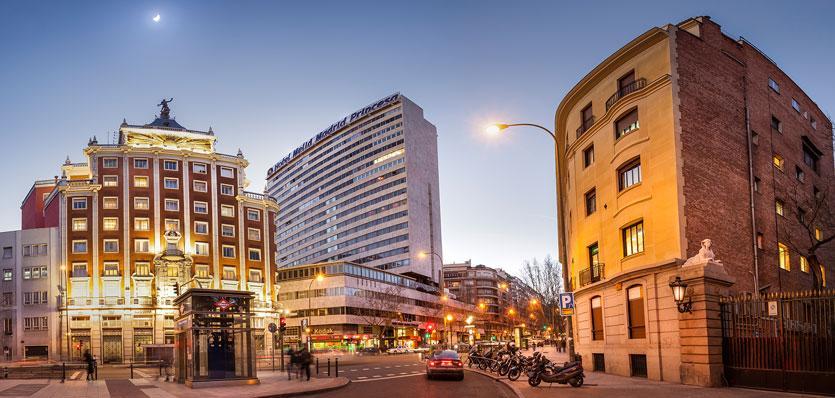
Princesa is one of the biggest tourist destinations in Madrid, a district with many must-see attractions. The district’s main street, Calle Princesa, is one of the longest and busiest in Madrid. It runs between Plaza de España and Moncloa, where you see the Arc de Triomphe, the headquarters of the Spanish Air Force and Faro de Moncloa tower. Two iconic buildings facing the square, Torre de Madrid and Edificio España. The square hosts the Monument Cervantes, where you can ask a passerby to take a picture of you.
Retiro
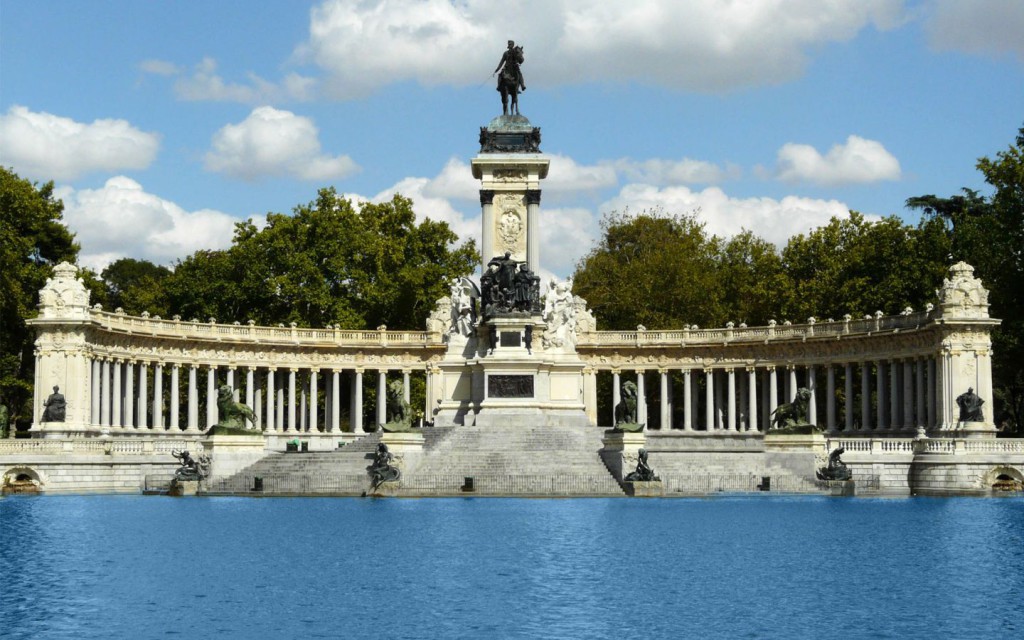
Explore around Madrilenians most beloved park. El Retiro Park is the real star in this neighborhood, bordered by Calle de Alcalá and Calle O’Donnell in the north, Doctor Esquerdo in the east, Avenida del Mediterráneo and Paseo de Reina Cristina in south and Calle de Alfonso XII to the west.
The park was developed under the Catholic Monarchs, in the early sixteenth century, but the neighborhood itself is much younger. With a growing population in the late nineteenth century, extended the city. The design of the Retiro is similar to that in the neighboring district of Barrio de Salamanca, with perpendicular streets with wide sidewalks, some of them dressed as attractive boulevards that Ibiza or Alcalde Sainz de Baranda. Visitors who come to Madrid can not miss El Retiro Park and its surroundings, filled with cultural attractions, restaurants and shops.
Salesas
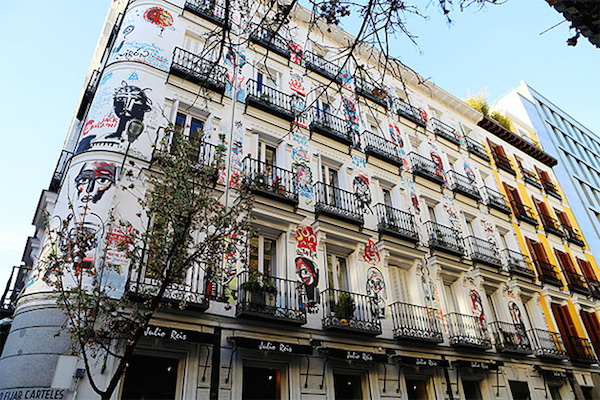
Salesas is a mix of the latest indie fashion and traditional businesses like Café Gijón. Barrio de las Sales has recently emerged as a popular tourist destination and shopping. It is a small town east of Paseo de Recoletos bordering Barquillo and Fernando VI, Plaza de Santa Barbara and Calle Genova.
The district has borrowed its name from the Convent of Visitacion de Nuestra Senora aka Convent of Salesas Reales. The architectural complex was founded in 1748 by Queen Barbara of Portugal, wife of King Ferdinand VI. Both queen and king have survived. The elegant building has a majestic staircase that provides access to Rococo church, designed by French architect François Carlier.
Aeropuerto – Feria de Madrid
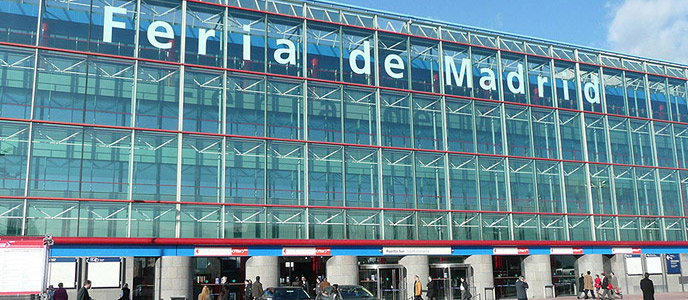
Are you coming to Madrid on business? Enjoy your leisure around downtown and the airport. Although it is farther away, the area around Madrid airport and Campo de las Naciones, where IFEMA-Feria de Madrid exhibition center is, well worth a visit.
Beside the Palacio Municipal de Congresos de Madrid and the Feria de Madrid, opened the Juan Carlos I Park its doors to the public while Madrid was designated as European Capital of Culture in 1992. It is a 30,000m2 lake in the park, one 1,900m long estuary, around twenty outdoor sculptures, a garden called “Las Tres Culturas”, climate known as “Estufa Fria”, which has a collection of over 200 exotic plants and an auditorium. In the park you can take a catamaran trip, or bikes that are available absolutely free.
Although many Madrileños never heard of El Capricho Park, it is a wonderful green space, developed by the Dukes of Osuna in 1784. The park has three types of classical gardens, parterre or French garden, the English gardens and Italian giardino. Judas trees, elm trees, almond trees, holm oaks and lilacs grow here. Backed by twelve Ionic columns, the small temple dedicated to Bacchus is one of the most romantic spots in the garden. Football fans should stop at Ciudad Deportiva del Real Madrid, the club’s home in Parque de Valdebebas.
Map of Madrid

